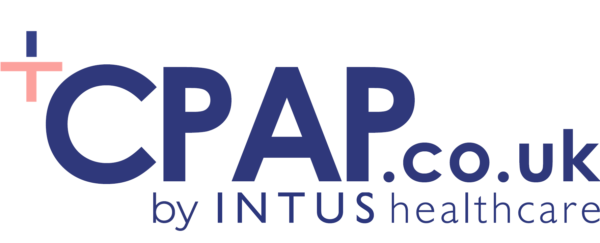Last updated on April 28th, 2023 at 04:13 pm
Many great posts appear every day on the various sleep apnoea discussion forums we track online and we wanted to share this one, by “Tony the Busman” from the BSSAA forums. He attended the 12th S.A.S.A. Day Conference and 13th AGM in June at the Education Centre St. John’s Hospital, Livingston. Various doctors and sleep clinic directors spoke about the progress they made in the field of sleep apnoea and therapies to remedy it.
Tony writes:
“I recently attended the Scottish Association for Sleep Apnoea (SASA) Conference and AGM and thought I would share my thoughts about the event with you as well as providing you with a brief report of the proceedings.”
“The venue was St John’s Hospital in Livingston. Livingston is difficult to get to by public transport, but is well connected to the motorway network and the parking at the hospital is relatively cheap (£1.00 per day), so it is probably not a bad venue if you are travelling by car. The actual conference was held in the lecture theatre in the education block and I have to say I found this to be a much better choice of venue than the hotel that was used last year as it created a better atmosphere.”
“The attendence was a bit dissappointing, but this may have been due to the choice of venue. I was also disappointed that only two trade stalls were in attendence, Respironics and some nasal spray company. Given that most of the delegates use Resmed machines and masks, it was particularly disappointing that Resmed were not there, particularly as they had originally promised to provide a workshop on the correct fitting of masks and how to care for your mask. However, I believe that their absence was unavoidable.”
“Dr Tom Mackay, the director of the sleep clinic at Edinburgh Royal Infirmary (ERI) updated us on developments at his clinic. They are seeing about 700 new patients every year and this would be more if it were not for the setting up of clinics at Glasgow, Aberdeen, Dundee and Inverness which has taken some of the pressure off of them. He stated that they are working on trying to get GP’s to provide the annual check-up facility and to provide users with items such as replacement masks, hoses, filters, etc. One of the reasons that GP’s do not want to do this is because they feel that they have very little expertise in this area, with a typical surgery with about 8,000 patients usually only having about 5 or 6 cases. However, possibly more pertinent is the fact that the consumables (masks etc) are not included on the GP’s drugs tarriff, which means that they cannot actually prescribe them and instead would have to purchase them out of their general budgets. Dr Mackay is lobbying hard to have CPAP equipment added to the GP’s drug tarriff. Dr Mackay did also say that he felt that the clinics should all work together with problems being worked through on a collaborative basis to ensure that patients got the best possible service. He also mentioned that the Scottish Executive has brought in new waiting times targets from December and that from referral to treatment should now take 40 weeks. However, he did say that they can see urgent cases much quicker and that the quality of the referral letter from your GP is critical in deciding who is an urgent case. He also stated that they are very keen to do half and half sleep studys if possible so as to reduce the length of time that patients have to wait for treatment.”
“Christine Graham MSP was the next speaker and she updated us on the current campaign to provide a national sleep apnoea service with Edinburgh acting as the national centre of excellence. As her party (SNP) is now in power and she is the convenor of the health committee she is hopeful that she can raise the profile of sleep apnoea amongst MSP’s and is hopeful of trying to introduce a members bill or to get a members debate on the subject. She stated that although it may be a slow process she was totally committed to the campaign and would do whatever she could as a backbench MSP to achieve this goal.”
“There then followed a question and answer session with Professor John Stradling from the Oxford (John Radcliffe) Sleep Centre and this was followed up after lunch with a workshop session where further questions could be raised. It should be noted that Professor Stradling had flown up from Oxford, specially to be at the conference.”
“Professor Stradling pointed out that NICE’s review of funding for CPAP equipment in England and Wales had published a draft report that was very supportive of adding CPAP to it’s list of approved treatments. He stated that the report should be out for consultation and available on NICE’s website in August. He did say that in his experience it was very rare for a final report to change significantly from the original draft report. Hopefully, he will have more to report at SATA day in November. It was notable that NICE had taken into account the cost to society of OSA sufferers causing RTA’s as these societal costs are not usually part of NICE’s remit, as they generally only look at the value for money option on a very narrow clinical needs basis.”
“He stated that in his opinion having an operation on your uvala was a waste of time as it was extremely painful and did not help to reduce OSA as it was the airways getting blocked that caused the apnoeas, not the soft tissue at the back of the throat.”
“He did mention the new stomach banding operations and said that this might prove to be an effective way of reducing weight, which can be beneficial in some cases of OSA (although obviously weight loss can be beneficial in other areas too.)”
“The issue of whether or not you should buy or rent a CPAP machine was raised and whether or not it was better to have a fixed pressure machine or a variable pressure machine. He replied that it was vital that a proper sleep study was carried out to determine whether CPAP was needed and what pressure the machine should be set at. He also said that in his opinion, for the vast majority of sufferers it did not matter whether they had a fixed pressure or a variable pressure machine.”
“Another issue that was raised was why after the first week or so, some people start to feel as if the treatment is not benefitting them. He replied that there is usually a period at the beginning where because you are so sleep deprived that the treatment is bound to have a very beneficial effect, but that for many people it takes about six months before they feel the full benefits of the treatment. Interestlingly, he also said that a side effect of successful treatment was that your immune system also started to function better, so that is why some people experience less cold sores, colds etc as the immune system is no longer having to fight the effects of sleep deprivation.”
“He also mentioned that you could probably get away with not using your CPAP machine for a day or two if you happened to go on holiday and couldn’t use it without suffering too many ill effects. This prompted some debate among the audience and it was generally agreed that you could probably just about get away with two days at a push, but you would probably suffer for it on the third day. Professor Stradling also said that if you are going to have a nap without your CPAP machine, then it is best to do it sitting upright in an armchair as this is the best position for ensuring that as much air as possible gets into your airways.”
“So in conclusion not a bad day. No earth shattering revalations perhaps, but a good chance to catch up with old friends and make some new ones. It was also good to share experiences, tips etc with others and hear what the experts thought were the latest developments. No doubt I shall be providing you with another report next year.”
The N.I.C.E. Tony mentions stands for the National Institute for Health and Clinical Excellence and is part of the NHS. Their website has more info on the Sleep Apnoea and CPAP appraisal in development here. An insightful report with some shocking statistics can be downloaded from their website here.
Tony’s report gives a great insight at what happens at these meetings. Anyone interested in staying up to date in the analogue world is recommended to visit their local apnoea association’s meetings. The Scottish, Welsh, Irish and English associations all have great websites you should bookmark. Events dates, where available, will be displayed on the www.cpap.co.uk homepage in the left column. More local support groups can be found on this page.
The clinics in Scotland that Tony mentioned can all be found on the sleep clinics map here.
Thanks to Tony for sharing the write-up. If you have any comments about this meeting, please leave them in the comment section below.

